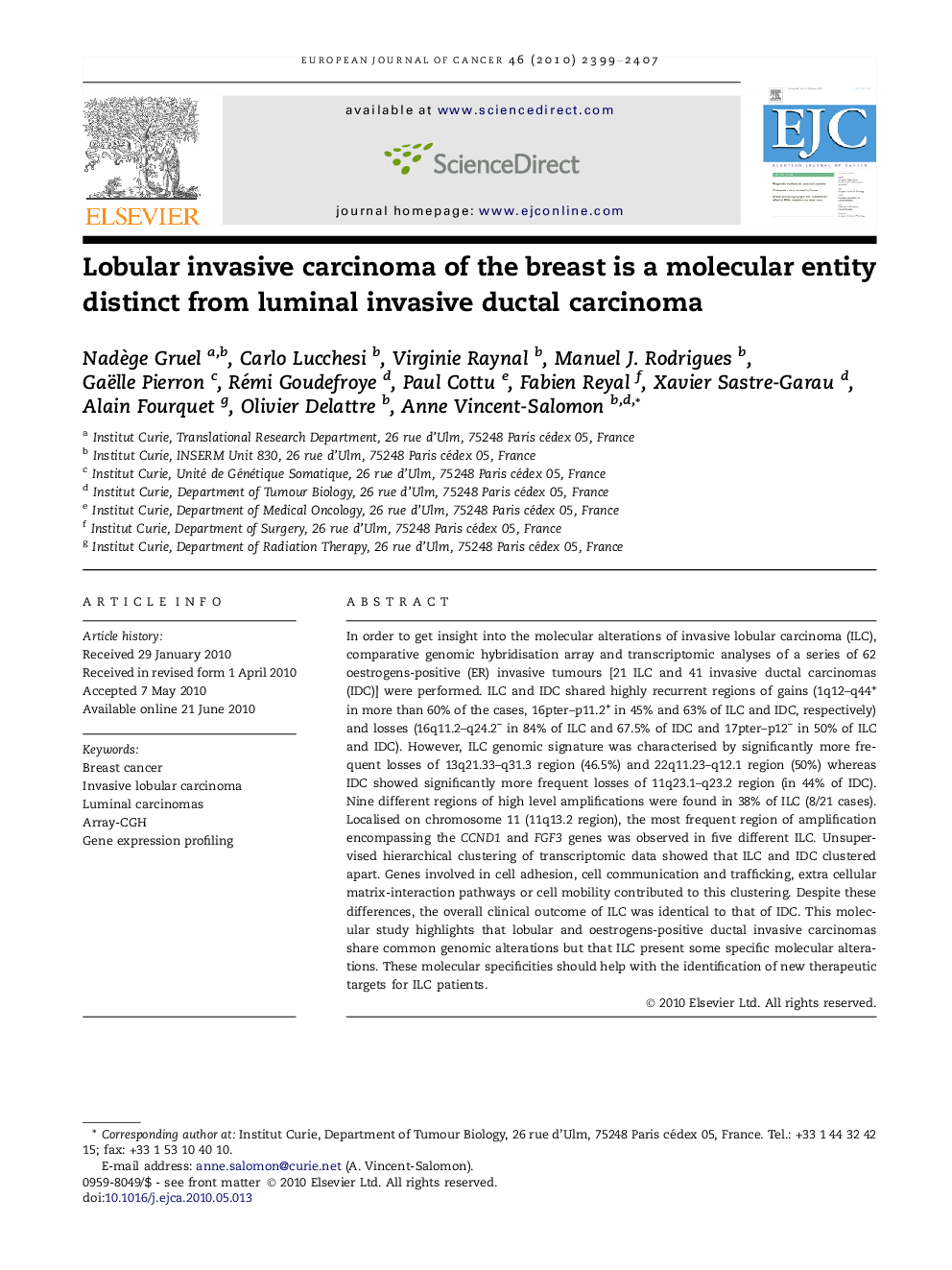| Article ID | Journal | Published Year | Pages | File Type |
|---|---|---|---|---|
| 2123975 | European Journal of Cancer | 2010 | 9 Pages |
In order to get insight into the molecular alterations of invasive lobular carcinoma (ILC), comparative genomic hybridisation array and transcriptomic analyses of a series of 62 oestrogens-positive (ER) invasive tumours [21 ILC and 41 invasive ductal carcinomas (IDC)] were performed. ILC and IDC shared highly recurrent regions of gains (1q12–q44+ in more than 60% of the cases, 16pter–p11.2+ in 45% and 63% of ILC and IDC, respectively) and losses (16q11.2–q24.2– in 84% of ILC and 67.5% of IDC and 17pter–p12– in 50% of ILC and IDC). However, ILC genomic signature was characterised by significantly more frequent losses of 13q21.33–q31.3 region (46.5%) and 22q11.23–q12.1 region (50%) whereas IDC showed significantly more frequent losses of 11q23.1–q23.2 region (in 44% of IDC). Nine different regions of high level amplifications were found in 38% of ILC (8/21 cases). Localised on chromosome 11 (11q13.2 region), the most frequent region of amplification encompassing the CCND1 and FGF3 genes was observed in five different ILC. Unsupervised hierarchical clustering of transcriptomic data showed that ILC and IDC clustered apart. Genes involved in cell adhesion, cell communication and trafficking, extra cellular matrix-interaction pathways or cell mobility contributed to this clustering. Despite these differences, the overall clinical outcome of ILC was identical to that of IDC. This molecular study highlights that lobular and oestrogens-positive ductal invasive carcinomas share common genomic alterations but that ILC present some specific molecular alterations. These molecular specificities should help with the identification of new therapeutic targets for ILC patients.
